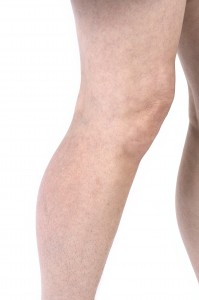Varicose Veins Overview
There are many challenges facing people who wish to show off more skin when they go to the beach, or dress up for an occasion, or even for people who wish to be a bit more risqué while in casual dress.  There are freckles, scars, uneven pigmentation, among others. But no skin blemish is more unsightly, and more problematic, than varicose veins.
There are freckles, scars, uneven pigmentation, among others. But no skin blemish is more unsightly, and more problematic, than varicose veins.
What are varicose veins?
Varicose veins are, simply put, veins that have enlarged and cause what is known as retrograding, or the reversal of blood flow in the veins, which cause them to grow even more. Varicose veins can appear all over the body, but appear predominantly on the legs, because the legs exert a lot of pressure, especially when one is standing up.
Varicose veins are caused by a number of things, but females are more prone to it than males. Aside from higher pressure in standing, other factors that can cause varicose veins are obesity, pregnancy, abdominal straining, menopause, and aging.
Signs and symptoms of varicose veins
A person can tell if he or she has varicose veins through a number of symptoms. Ankles can feel swollen, and spider veins can appear anywhere on the affected leg. The leg will then feel heavy and tense. Another sign involves sudden cramps and pains when making sudden movements with the leg, and the appearance of red areas in the legs.
Are varicose veins dangerous? Should they be treated?
Varicose veins can cause complications that range from simple irritations to critical problems. They can be itchy, and, when scratched, can often lead to ulcers. They can also cause skin deterioration, severe bleeding, and intense pain, which can often hinder the person’s ability to use the leg, whether to walk—or even stand—for long periods of time.
For people who wish to prevent these problems, it is advised that they take the various available treatments for varicose veins before they get worse.
Varicose vein treatments
There are many ways to treat varicose veins. Some of these involve surgery and vein removal; others are non-invasive and require no surgery.
The traditional surgical treatment is called vein stripping. Doctors give the patient either general or local anesthesia, make incisions in certain entry points in the groin or leg area, and insert a special wire into the vein, until it reaches the target area, at which point, the vein is pulled out of the body.
An available non-surgical treatment is sclerotherapy, which requires the injection of certain medicines into the veins to make them shrink. Advances in sclerotherapy have developed into a treatment called foam sclerotherapy, which uses foamed-based sclerosant medicine instead of the traditional liquid. This prevents the medicine from mixing with the blood and becoming diluted, making it more effective than the liquid method.
Another non-surgical treatment is radiofrequency ablation, which uses a radiofrequency catheter that’s inserted into the vein and treats it with radio-energy, causing it to close.
Lastly, surgeons can also use the endovenous laser treatment, where they insert a catheter with a laser fiber into the vein and guide this to the vein area in order to burn it using laser energy.
